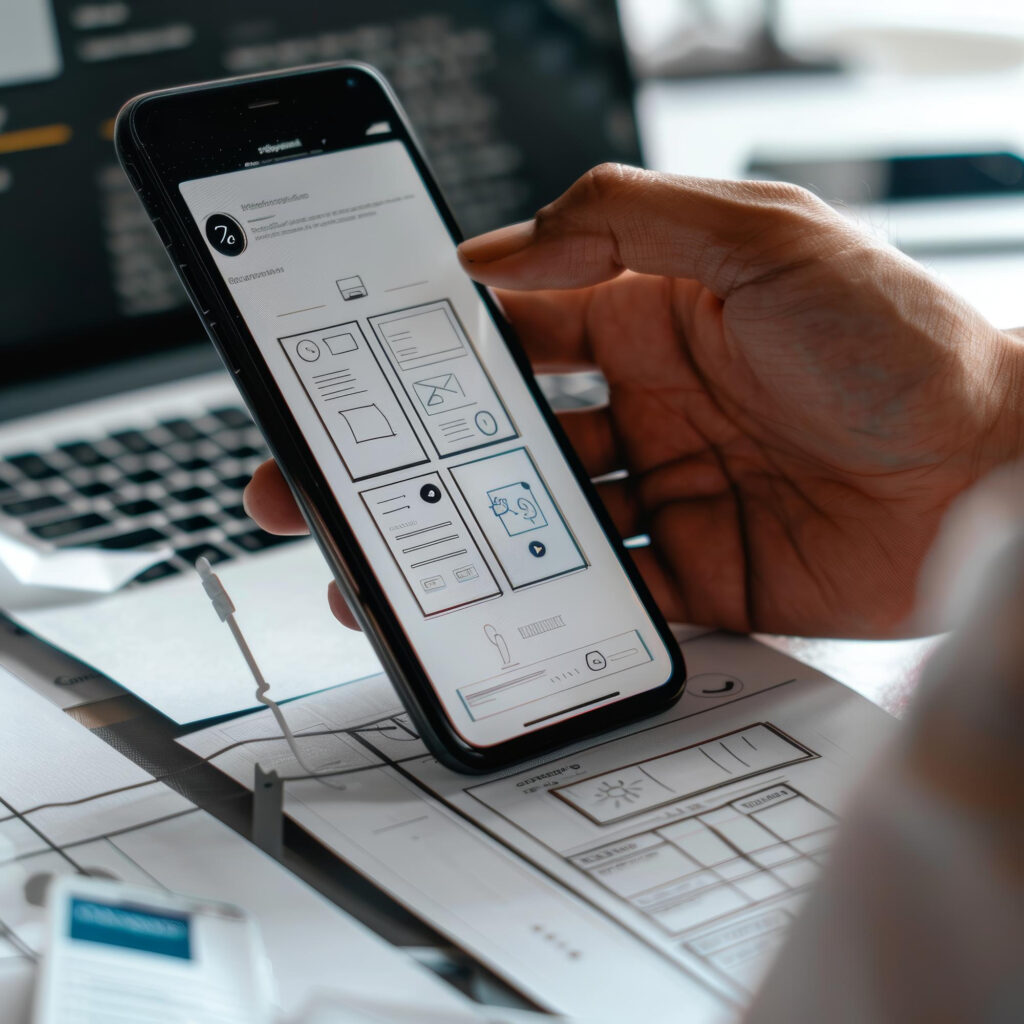The technology of today is accelerating at a rapid rate. From generative AI to healthcare innovation, we’ve come a long way in a few short decades. Mobile apps are commonplace now, with the average phone user having quite a few apps on their smartdevice. Apps can tell us the weather, add up figures for us, help us browse the internet or allow us to enjoy some leisure time with gaming.
You might be wondering how much it costs to build an app. According to some sources, the average mobile app costs about $170,000 (AUD) to develop. Although, some may only cost between $10,000 and $20,000, and others can cost up to $500,000 or more with ongoing development costs. These numbers are obviously dependent on a range of factors.
This article will discuss all the costs that might be associated with building an app, giving readers information on where you might have to spend your money and how different factors influence app development and cost. Of course, you need a budget to build an app, and it might be worth considering a Master of Business Administration online to learn how to budget when it comes to business expenditure. So, read on to learn more about this valuable topic.
App Complexity and Features
The complexity, function and features of an app play a large role in its development cost. Features such as including an AI chatbot and security measures such as encryption and user authentication will also increase the cost. Then you have features such as push notifications, search features, filters, third-party integration (more on this below) and more. Features that require real-time data synchronisation will also directly impact the development cost. More intricate and complex apps demand additional coding, testing, and optimisation efforts from a developer, which will increase the cost.
For instance, a simple app with basic features may cost between $10,000 and $50,000, whereas this will increase to closer to $100,000 or more for more complexity and intricate features.
UI and UX Design
The user interface (UI) and user experience (UX) design features will also impact the cost of the app. An intuitive, user-friendly and visually appealing user interface is essential for any app’s success and to help it stand out in the crowded application marketplace. You want to ensure that you develop an interface that is both user-friendly and aesthetically pleasing, and this involves UI/UX experts who understand user behaviour. Their expertise and cost add to the overall development expenses. High-quality, customised designs, graphics and visuals will enhance the app’s appeal but also add to the cost of development.
The Developer’s Level of Experience
When it comes to your app developer, their level of experience and skill set will also have a cost implication. For instance, you could choose a company that has won awards and makes applications as its primary function, but this will be more expensive than choosing a freelance developer who works on a single job at a time. Remember that choosing a great developer can influence the timeline for developing the app, as well as its function, features and overall quality.
Testing and Quality Assurance
Thorough and ongoing mobile app testing is essential for the development process to identify and fix glitches, bugs and performance issues. Great quality assurance processes, such as beta testing and user feedback incorporation, ensure that the app will function seamlessly. However, these testing and quality assurance processes will definitely consume time and resources, influencing the cost of the app development.

Market and User Research and Analysis
Understanding your target audience and the competitive landscape you will operate in will require thorough market research and analysis of the qualitative data that you gather. This research will ensure that the app meets user needs and will stand out among competitors, although this will have to be done at an additional cost, which will affect the overall cost of app development.
Development Approach and Methods
Mobile app development can take several different approaches, such as native development for Android or iOS or cross-platform frameworks so the app can work on both. While native apps offer benefits such as superior performance on a single platform, cross-platform solutions expedite development and ensure a wider market share. The chosen approach will impact the time, resources and cost required for any app development.
Integration and Implementation of Third-Party Services
Many apps rely on various third-party services, such as mapping services, payment gateways or analytics tools. Integrating these services seamlessly into an app will require additional development effort, time and work and may involve licensing fees for the third-party services, all of which will impact the overall cost of developing the application.
App Development Timeline and Deadlines
Urgent app development projects with tight deadlines will often require additional resources to speed up development. If you are working to a tight timeline for launch, your app developers and designers may need to work extra hours, known as crunch, which can lead to increased costs for the app. This is worth factoring into the overall cost of app development.
App Development Team Composition and Expertise
The composition of your whole development team, including programmers, testers, designers and project managers, will all impact the cost of developing an app. Highly skilled professionals will command higher salaries, but their combined expertise will contribute to the app’s quality. The more people you have working on the project, the quicker it will finish, but the more it will cost.
Ongoing Post-Launch Maintenance and Updates
Building an app is not a one-and-done task. Application development doesn’t end with launch; it’s not a set-and-forget process. Ongoing and regular maintenance, updates and addressing user feedback are ongoing tasks for a development team or programmer. Allocating funds for post-launch activities is essential for the success of any app and will impact the overall cost of app development.
Various Economic Factors and Development Location
The economic climate that you are working within, and the app development location will also influence costs. App development in countries with higher living standards will generally lead to higher hourly rates, affecting the overall budget for your app development. Developing your app in a market with lower hourly rates can save you money, but sometimes at a cost to overall quality and glitches and bugs.

This helpful article has shared the cost of building an app and the various factors that influence it. We’ve shared everything that you need to consider and the rough cost range that you might incur to develop a successful app.


